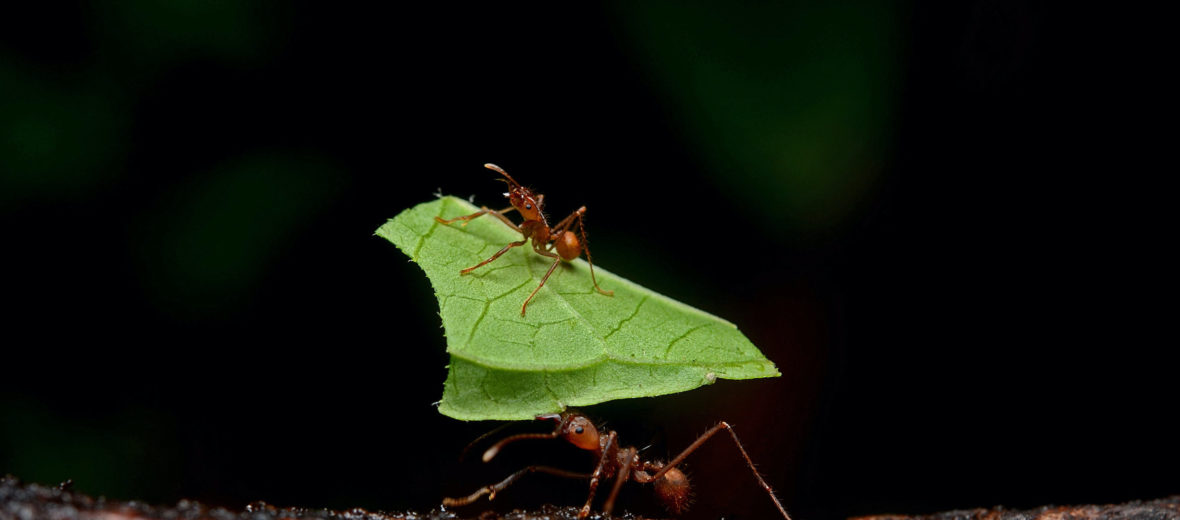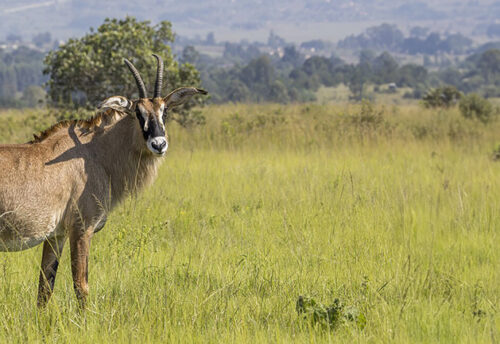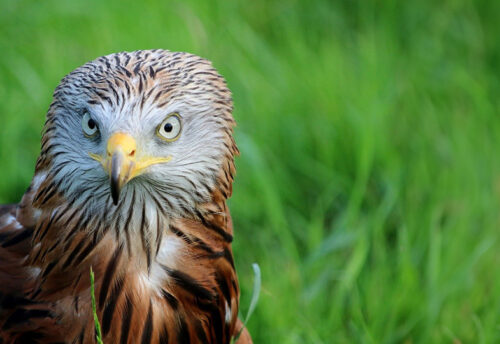
Found in the tropical rainforests of Central and South America and as far north as Mexico and the Southern United States, it’s the leafcutter ant. These industrious ants cut through vegetation with the greatest of ease and carry back the felled leaves to their secret lair. More on that in a bit. There are 47 known subspecies of leaf cutters that belong to 2 genera Atta and Acromyrmex. Due to their large numbers, these ants are listed as Least Concern by the IUCN.
First the Stats…
Scientific name: Atta & Acromyrmex (respectively)
Length: Up to .25 inch
Lifespan: Up to 5 weeks
Now on to the Facts!
1.) Maxima ants look for the vegetation and are responsible for bringing it back to the nest. After vegetation is found, media worker ants use their strong vibrating mandibles (jaws) to cut sections off the leaves and drop them to the ground.
2.) Majors are the biggest working ants. These are known as the soldiers. They protect the smaller worker ants and the nest with their lives. Basically leafcutter ants, like other ants, use a caste system to dictate who does what.
3.) Once underground, in their nest, minima ants chew up and digest the leaves into small pellets that are placed into a bed of fungus. This fungus consumes the leaf pellets and produces food for their larvae, as well as the adult ants.
4.) The fungus that digests the leaves produces nitrous oxide (a greenhouse gas) into the atmosphere. The quantity of gas released by these fungus piles is similar to anaerobic dairy manure lagoons.
5.) When an ant eats something poisonous, they tell the colony about it via chemical messages in their feces (poop). In order for the other ants to receive the daily messages, up to 35% of the worker ants pay a visit the colony waste dump each day.
But wait, there’s more on the leafcutter ant!
6.) Since ants, in general, don’t have very good eyesight, the scouts lay down a chemical trail (pheromones) that
basically says, “Hey gang, this way!” The other ants follow this trail and soon they all form tight knit lines to and from the food source.
7.) A typical leafcutter ant colony can reach up to 8,000,000 ants in a few years! A large nest may have thousands of chambers. Some chambers are used for rearing their brood, others are used for food.
Did you know…?
A leaf cutter ant can lift up to 20 times its own weight! That is equal to a person lifting and carrying, with ease, a small to mid-sized truck on their back.
8.) Their sharp mandibles vibrate a 1,000 times per second to aid in slicing through leaves like a hot knife
through butter!
9.) In 6 – 10 weeks a leafcutter ant will reach maturity and will then be ready to perform the duties that its caste system has dictated.
10.) Industrious is actually an understatement. These crop pests can strip a tree of its foliage in less than 24 hours!
Now a Short Leafcutter Ant Video!
Learn more about all kinds of cool critters, right here!
Be sure to share & comment below! Also, check out the Critter Science YouTube channel. Videos added frequently!



